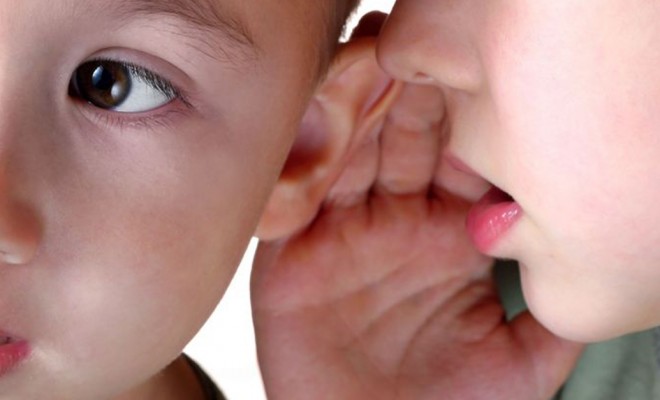
Physical Disabilities
The Effect of a Sensory Impairment
Children with a sensory impairment affecting hearing or vision must never be treated as if they had learning difficulties, and thus learning expectations should be the same as for any other child. However, these impairments naturally mean that learning will prove a much greater challenge than for most other children – unless educational providers are prepared to make enabling technologies available and learning resources accessible. To facilitate this, the Equality Act1 2010 requires ‘reasonable adjustments’ to be made for those with such additional needs. Importantly, as the Equality and Human Rights Commission2 point out, these arrangements must be ‘anticipatory’: thus for institutions, the absence of children with a sensory impairment will not excuse the lack of adequate facilities.
Hearing loss
Hearing loss, otherwise known as deafness, has implications for learning. As the National Deaf Children’s Society3 (NDCS) and others point out, it can vary both in ‘degree and nature’. This means a child’s hearing loss could be:
- mild, moderate, severe or profound;
- fluctuating (glue ear) or permanent;
- affecting one or both ears.
The two methods used to identify and describe levels of deafness are shown in the table below:
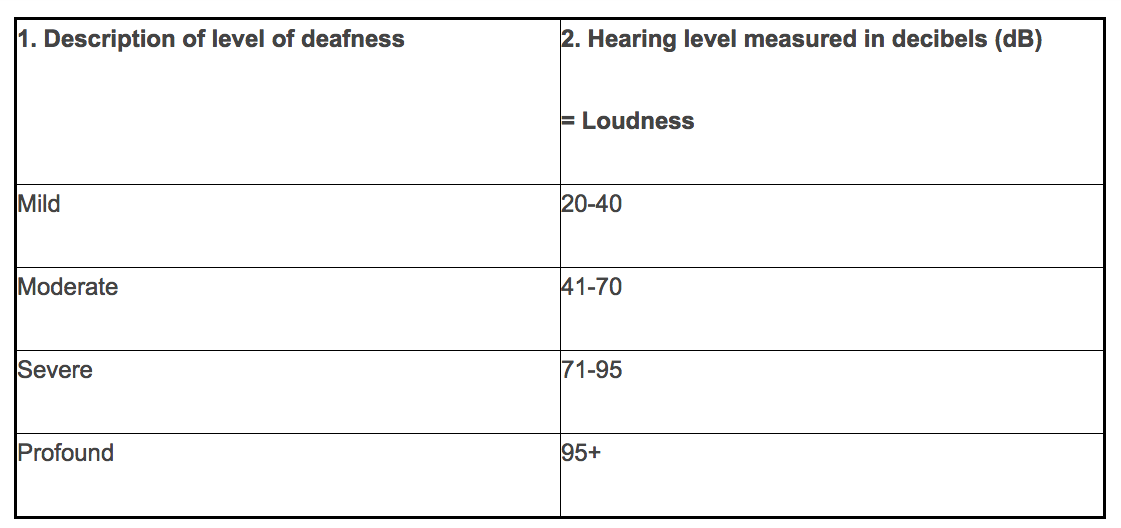
Thus, for example, a child who cannot hear sounds rated below 20 dB – such as a whisper – would be described as having a ‘mild’ hearing loss. The everyday implications of different degrees of hearing loss are mapped in the following diagram which outlines the relative sound levels of some common audio events:
Audiogram of everyday sounds
Inspired by NDCS (2012)
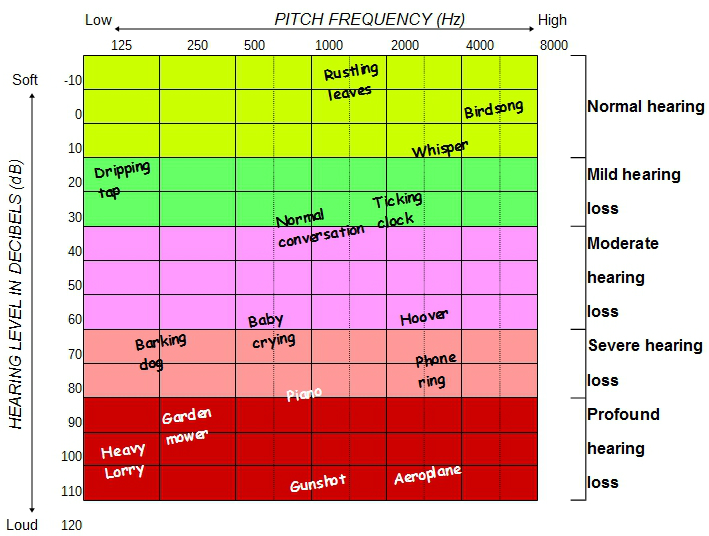
Implications of a sensory impairment on learning
As the diagram above conveys, each child’s hearing impairment may well be different as regards the frequencies they can sense and/or how loud the sound signal must be before they can hear anything at all. Whilst loudness is a relatively straightforward concept, the DfE Early Support4 information explains how the subtle impact of frequency levels can be easily overlooked:
‘Speech is made up of a range of frequencies, so it is important to consider frequency when thinking about a child’s ability to hear speech sounds. A good example of this is the word “moose”. ‘M’ is a low-frequency sound, ‘oo’ is a middle-frequency sound and ‘s’ is a high-frequency sound. To hear the word completely, a child must have appropriate levels of hearing at low, middle and high frequencies.’
Though any hearing loss imposes limits on a child’s experience, problems in the 20-60 dB range seriously affect the reception and understanding of conversational speech. This, of course, makes it considerably more difficult for children with a hearing sensory impairment to acquire, and benefit from, formal and informal educational exchanges, as occur, for example, in the classroom and at home, or through play, friendships and similar social experiences. To illustrate this, the diagram below shows where some common language sounds and syllables lie within the frequency spectrum of everyday speech:
Frequency range of conversational speech
Inspired by NDCS (2012)
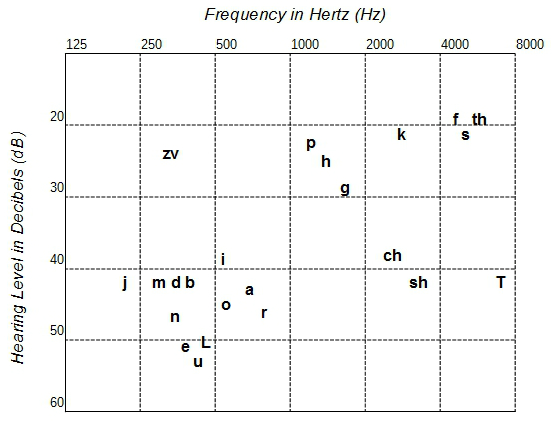
Just how problematic this can be is addressed in a 2015 report by The Ear Foundation5 which states that ‘children with mild hearing loss (up to 40 decibels) can miss between 25 – 50 per cent of what the teacher says in class … In comparison, children with moderate hearing loss (up to 70 decibels), miss over 50 per cent of speech.’
Read our article Supporting SEN Children with Speech and Language for more information on speech.
Prevalence of hearing loss
A survey conducted by Fortnum6 et al in 2002 explored the prevalence of hearing loss among the UK school population. Those children described as having a significant hearing loss (above 40 decibels) were distributed across moderate/ severe/ and profound categories in the following proportions:
Prevalence of hearing loss: UK school population
Fortnum et al. (2002)
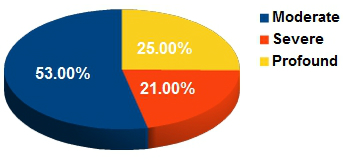
Sensory impairments and communication
Where hearing is a serious sensory impairment, the natural tendency to use other senses to compensate has been harnessed in several different ways to produce a range of different communication systems. Some of those listed by the NDCS and others as often used to facilitate children’s education are described below:
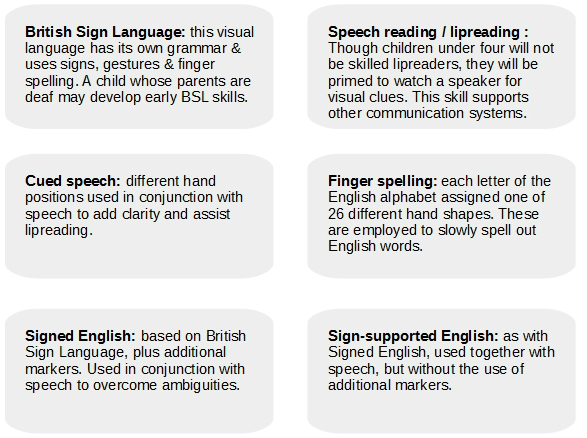
Unidentified hearing loss: cause for concern
Early years childcare professionals will understand that early intervention is the paramount consideration in cases where a hearing impairment is suspected. Collating the work of others, Frederickson and Cline7 have comprehensively listed classroom signs of potential hearing loss which, though many may have alternative explanations, nevertheless require careful investigation if a child:
- reacts slowly to instructions or repeatedly asks what to do;
- watches others, then copies what they do;
- constantly asks others to repeat what they have said;
- hears, but only intermittently;
- misinterprets information and questions, or responds to just part of what was said;
- can’t locate a speaker, or sound source (especially in noisy conditions);
- daydreams or shows poor concentration e.g. in discussions or at story-time;
- comments inappropriately, as if conversation topics are not followed;
- has delayed language development;
- has difficulty repeating words/sounds or remembering people/places;
- shouts without realising they are being noisy;
- makes speech errors;
- confuses similar-sounding words (e.g. that, fat, vat);
- watches speakers as though lip-reading;
- tends to be disruptive when expected to listen;
- has reading/spelling/writing difficulties;
- suffers frequent coughs and cold.
Visual impairments
Even though, according to the DfE8, children with visual impairments account for a relatively modest 1.8 per cent of those with SEN statements, education professionals should not underestimate the sometimes complex nature of their varied requirements. For example, the graphic below quantifies the typical range and variety of impairments among children served by specialist local authority services:
Range of visual impairment
Data from Keil and Clunies-Ross9 (2003)
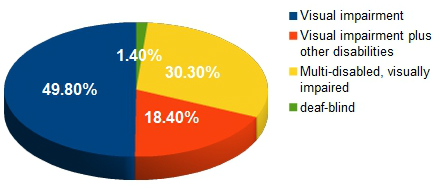
Clearly, the presence of other disabilities renders assessment more complex, and sometimes results in substantial visual needs losing priority, or perhaps being overlooked altogether. From an educational standpoint, an assessment of a child’s functional vision is an essential prerequisite to the planning of suitable provision – a process which can be significantly enhanced by input from other SEN professionals such as a qualified teacher of children with visual impairment.
Key considerations
The RNIB (Royal National Institute of Blind People) document ‘Focus on Foundation’10 provides a checklist of key points to guide and inform best practice for early years providers supporting children with a visual sensory impairment:
- Support and advice should be obtained from the local authority Visual Impairment Service.
- The child is first and foremost a child whose development will be individual no matter what level of vision impairment.
- Vision is the major source of information, stimulating curiosity, integrating information and inviting exploration.
- Higher skills in the use of the other senses do not automatically develop to compensate for the lack of sight, but develop through experience, practice and supported learning.
- Learning through senses other than vision can be slower and may be incomplete; it cannot always provide all the necessary information in order to ensure an accurate understanding of people, places and objects in the child’s environment.
- Lack of sight can have a profound effect on the child’s ability to interact socially. Social clues such as body language, gesture, eye contact, or facial expressions may be missed or misunderstood, and alternative ways of reading other people’s feelings and non-verbal communication need to be actively taught.
- A child’s confidence is influenced by their ability to be independent in both their learning and everyday routines.
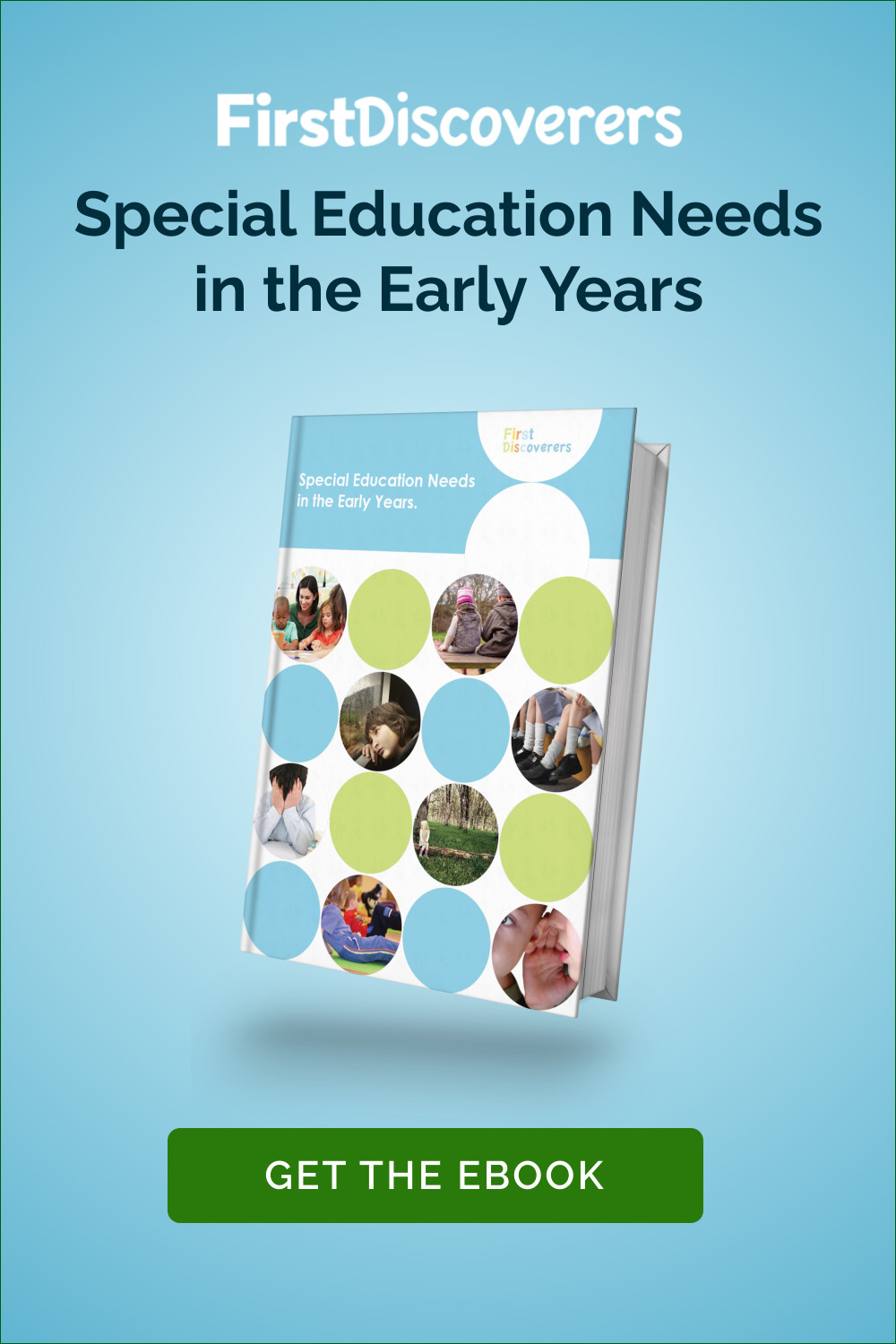
Extended curriculum
Amplifying the RNIB guidance, Frederickson and Cline7 note that curriculum requirements for children with visual impairments ‘will extend beyond the National Curriculum and encompass extra learning tasks around mobility, independence and access.’ And, as the DfE’s Early Support8 document advises, such additional requirements will usually include essential enabling skills like learning to read via Braille or Moon systems, and developing fluent ICT skills as early as possible.
Socio-cultural perspectives
As with other SEN issues, those with hearing and/or visual impairments will not necessarily see themselves primarily as ‘impaired’ – a perspective actively supported by the UN Convention on the Rights of Persons with Disabilities11, which determines that:
‘Persons with disabilities shall be entitled, on an equal basis with others, to recognition and support of their specific cultural and linguistic identity, including sign languages and deaf culture.’
High-profile Deaf and Blind role models and cultural groups – often habitually adopting these capitalised descriptors – have ensured that the ‘medical model’, which characterises sensory impairment as a ‘deficit’, has been counterbalanced by a ‘social model’ which recognises these conditions alone neither define nor diminish a person’s social worth. Accompanied by an understandably robust advocacy, these movements have already given fresh impetus to enabling technologies and assured widespread appreciation that, given equality of access, those with a hearing or visual sensory impairment can achieve to precisely the same degree as ‘normal’ hearing and sighted populations.
[References]



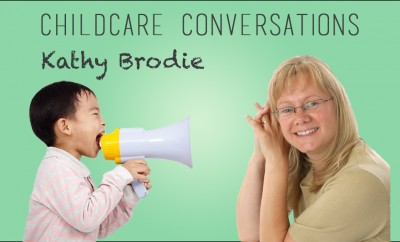
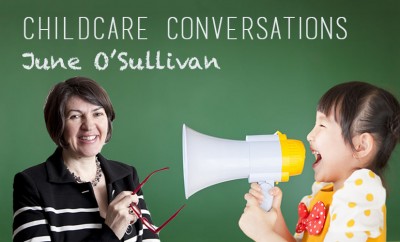

1 Comment
You must be logged in to post a comment Login